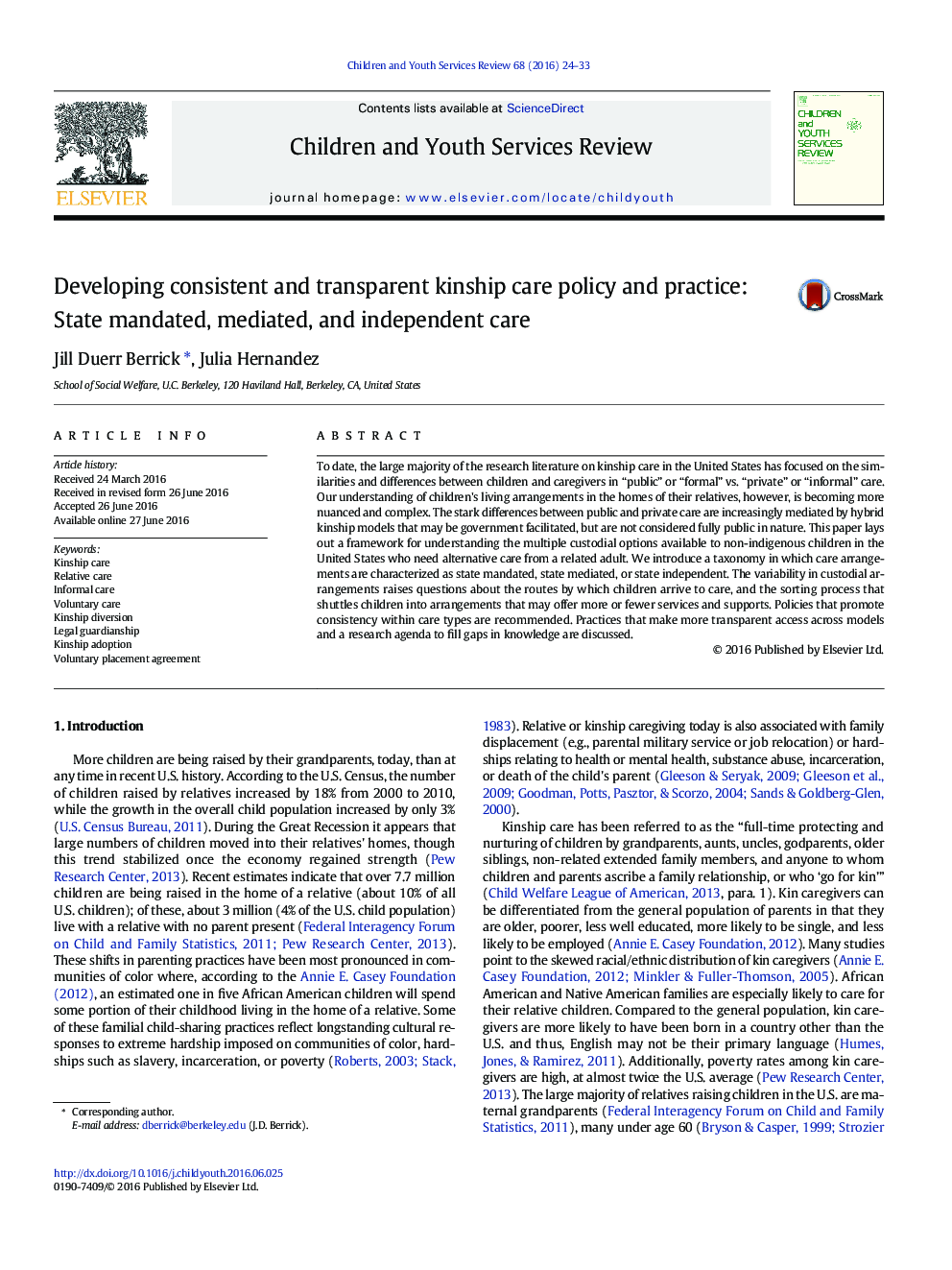| Article ID | Journal | Published Year | Pages | File Type |
|---|---|---|---|---|
| 345777 | Children and Youth Services Review | 2016 | 10 Pages |
•Introduces a new taxonomy of kinship care arrangements•Offers definitional clarity about distinctive types of kin care•Suggests an approach for policy consistency within kinship care types•Includes suggestions for greater family choice in decision making
To date, the large majority of the research literature on kinship care in the United States has focused on the similarities and differences between children and caregivers in “public” or “formal” vs. “private” or “informal” care. Our understanding of children's living arrangements in the homes of their relatives, however, is becoming more nuanced and complex. The stark differences between public and private care are increasingly mediated by hybrid kinship models that may be government facilitated, but are not considered fully public in nature. This paper lays out a framework for understanding the multiple custodial options available to non-indigenous children in the United States who need alternative care from a related adult. We introduce a taxonomy in which care arrangements are characterized as state mandated, state mediated, or state independent. The variability in custodial arrangements raises questions about the routes by which children arrive to care, and the sorting process that shuttles children into arrangements that may offer more or fewer services and supports. Policies that promote consistency within care types are recommended. Practices that make more transparent access across models and a research agenda to fill gaps in knowledge are discussed.
